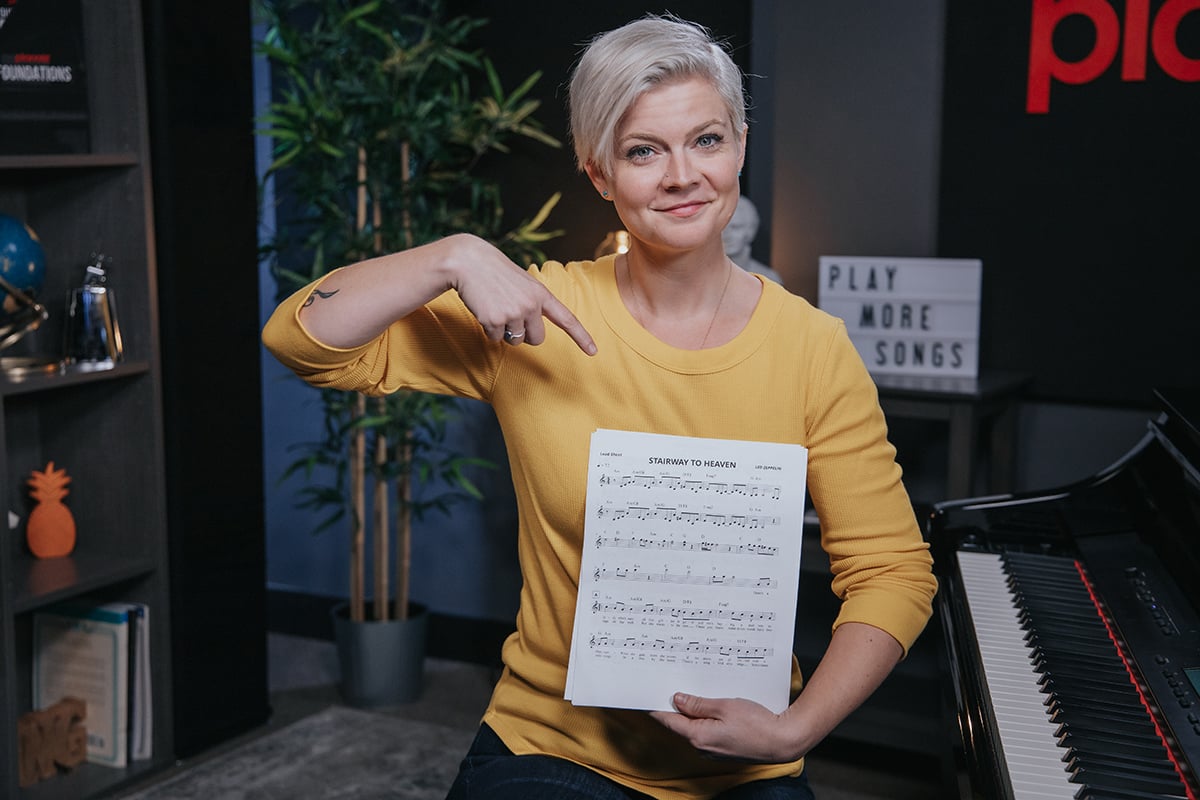Sight reading has never come easily to me. I’ve struggled with it from the beginning. At one point in my early piano years, I had to repeat an entire level because my teacher realized I’d learned nothing. I was hearing her demonstrate the song and then playing from memory, never actually knowing how to read the notes!
Along the way, I’ve learned some things that have made sight reading much easier for me, which I’ll share in this lesson. As you watch, keep in mind that some people will naturally find sight reading easier than others. Those of us with strong ears and the natural ability to play without music tend to struggle the most when it comes to reading notation. The reverse is also true for those who are strong sight readers. Strong sight readers will often have trouble playing by ear. The important thing to keep in mind is that we all have our own unique strengths and weaknesses and we need to celebrate both.
You can read a summary of the lesson below. Hope you enjoy it!

Learning how to read music is like learning a new language. It can feel intimidating and frustrating, but it doesn’t have to be. With proper training, you can quickly and easily read music and unlock the songs you know and love. Take a look at Sight Reading Made Simple, our 100% FREE course on how to painlessly read notes.
CHECK IT OUTA staff is made up of 5 lines and 4 spaces, and each line and space has a note name attached to it. We have a treble clef (or ‘G clef’) up above – usually reserved for the right hand – and a bass clef (or ‘F clef’) below, played lower down on the piano and usually reserved for the left hand.
The treble clef is also called the ‘G clef’ because the line that runs through the center of the treble clef is the G note. That should give you a quick reference when you’re sight-reading.
The next space up from G is the next note: A. After that space, you hit another line, which is B. Then there’s another space, which is C. After that we have D, E and F. It keeps going from there, but we’ll keep it within the staff for now.
In the video, you’ll notice there’s a small line right below the staff with a note on it. That’s middle C notated in the treble clef, which will be your landmark note! We then have D, E, F, and back to that G we talked about earlier.
Anytime you move from one line to the next line, you’re skipping a note on the piano. If you can practice skipping through the alphabet (A-G) in your head and going back and forth, this can help you with your sight-reading. You’ll start seeing the patterns and get faster as you go. Look at the distance between the notes, and use C and G as your landmark notes.
The spaces and lines on the staff for the bass clef are totally different from the staff for the treble clef, and this may seem confusing for beginners. But it’s still based on middle C, which is how everything connects between the two clefs. Start with C, and the space below it is B. The next line is A, the next space G, and the line after that is F…which is your landmark note for the bass clef.
Again, if the note on a space is followed by a note on the next possible line, you’ll know it’s the next note on the keyboard. If the note on a space is followed by a note on the next possible space, you get an interval (where you skip a note).
Look for patterns in the music – it really helps!
What happens when we run out of lines and spaces? After all, there are more keys on the piano than lines on the Grand Staff.
That’s where “ledger lines” come in. We have a lesson on them right here.
This is a common question. If you’d like to learn all about the musical symbols (sharps, flats, naturals) then we have a complete lesson on them here.
Lisa Witt has been teaching piano for more than 20 years and in that time has helped hundreds of students learn to play the songs they love. Lisa received classical piano training through the Royal Conservatory of Music, but she has since embraced popular music and playing by ear in order to accompany herself and others. Learn more about Lisa.


By signing up you’ll also receive our ongoing free lessons and special offers. Don’t worry, we value your privacy and you can unsubscribe at any time.
We use cookies for traffic data and advertising. Cookie Policy »